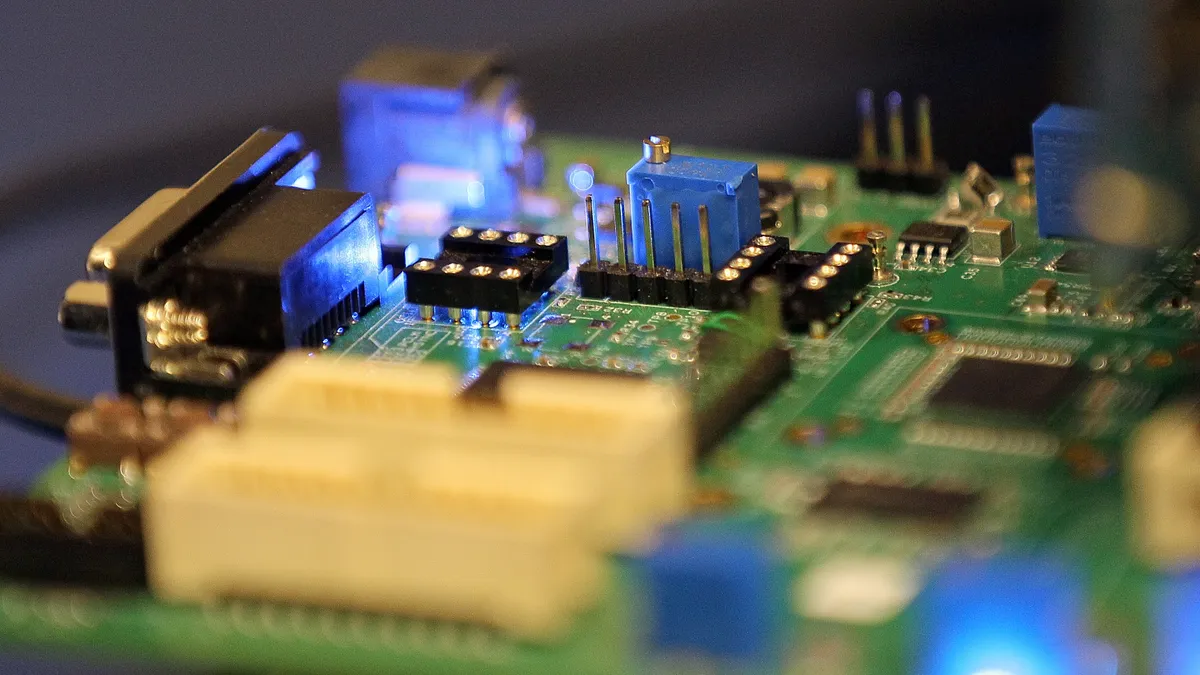Dive Brief:
- NXP Semiconductors expects its automotive customers to begin shifting away from just-in-time inventory management for semiconductors following the issues experienced during the current component shortage, but low levels of availability is currently holding them backing from transitioning to higher inventory levels, CEO Kurt Sievers said on the company's earnings call.
- "A just-in-time system is not totally compatible with the three to six months manufacturing cycle time in semiconductors if you don't have some sort of a buffer in between which is dealing with it," Sievers said.
- He also noted that NXP is signing on to more long-term contracts with automotive customers, which are also sharing more binding long-term forecasts that help with capacity planning.
Dive Insight:
The semiconductor shortage has dragged on for months at this point and automotive companies have outlined some of the steps they're taking to adapt.
Ford is focusing on build-to-order vehicles, and Tesla rewrote the firmware for its vehicles to allow it to use chips from an alternative supplier. Despite these steps, companies have had to cut production levels and are struggling to keep up with demand.
But Ford CEO Jim Farley hinted that the automaker is also taking the approach outlined by NXP: building up inventory.
"Risk mitigation actions include stockpiling of critical parts like semis, dual sourcing and design interchangeability in the case of single sources," Farley said on the company's earnings call last week.
NXP said it is working to expand its manufacturing capacity to help automotive companies get the parts they need. But it has also recovered some capacity that it lost earlier in the year as a result of winter weather.
"What I can tell you is indeed that both factories [in Texas] are up and running completely," Sievers said. "So we are up to the pre-storm and higher output levels in both factories, so firing on all cylinders again."
The ability to increase these inventory levels, though, relies not just on the capacity of NXP, but on the tier below them at its partner semiconductor foundries. And Sievers said there are signs of capacity improvement at that level.
"During quarter two ... we began to see wafer supply from our foundry partners and internal fabs improve," he said. "We do anticipate continued increase of wafer supply during quarter three and beyond, which will support our revenue growth in subsequent quarters."
Expanding capacity with its supplier partners has also required signing its own long-term contracts with these foundries, which Sievers referred to as "significant investments."
Last month, TSMC outlined the efforts it was taking to expand capacity for the automotive sector specifically.
"In first half of this year, we successfully increased our output for MCUs, one of the key components in automotive semiconductor products, by about 30% as compared to first half 2020," TSMC CEO C. C. Wei said. "For the full year, we expect to increase output for MCUs by close to 60% over the 2020 level which also represents about a 30% increase over the 2018 prepandemic level."
A recent forecast from IHS Markit shows that they expect there won't be enough capacity in the market to meet demand and fill backlog until the first quarter of 2022.















